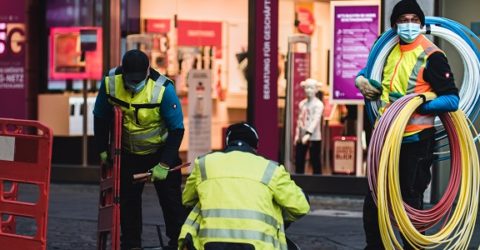How fast is UK broadband these days?
How fast is UK broadband? It’s a question many people ask, especially in an international context, but the answer is far from clear-cut

The last 18 months has had a catastrophic effect on many aspects of the UK economy, but its impact on broadband speeds has been less well documented, beyond a degree of network congestion.
Three lockdowns, staff shortages and funding issues have seen ISPs up and down the country postponing or shelving planned infrastructure works.
The net result of this enforced inactivity can be seen in the latest figures from broadband industry watchdog Ofcom.
Every year, it sets out to answer the question of how fast is UK broadband, and 2021’s findings look very familiar…
Haven’t I seen you somewhere before?
Back in 2020, the UK’s average median broadband download speed stood at 50Mbps, with uploads at 9.8Mbps.
Surprisingly, this year’s figures are almost identical – 50.4 and 9.8Mbps for downloads and uploads respectively.
It’s worth reiterating that slower internet connections are always biased in favour of downloads, since we tend to consume a lot more content than we create.
The 2020 figures were underwhelming by themselves, so the fact there’s been no subsequent improvement in connection speeds is all the more disappointing.
The news gets even worse when you consider the progress that was being made before COVID struck, through improvements to telephone exchanges and fibre cabling installation.
The 2020 figures were a marked improvement on 2019’s 42.1 and 9.1Mbps download and upload figures, which in turn were higher than 2018’s figures of 37 and 6Mbps.
Progress has clearly stalled.
Is there any good news?
Ofcom’s data doesn’t entirely answer the question of how fast is UK broadband.
Separate data shows the percentage of UK premises cabled with full fibre broadband increased from 18 per cent in September 2020 to 24 per cent this year.
MoreBT tops list of most complained about broadband providers
Fibre to the Home (FTTH) represents a quantum leap over existing ADSL and Fibre to the Cabinet connections.
Yet homeowners may not have signed up to these newly available services for various reasons – such as being partway through contracts which still have a period of time to run.
The benefits of 2021’s connection upgrades will filter through over the next 18 months, by which point another swathe of UK households will find themselves mid-contract as their connections are improved.
This data was compiled from fewer than 2,600 UK homes, which is a sufficiently small sample to miss some trends.
Spending more money on internet connectivity clearly isn’t a priority for households struggling with debt, furlough or other economic shocks.
MoreHow is the UK broadband network performing?
Ofcom’s data also tends to miss out smaller ISPs, who are increasingly likely to be hyperfast hyperlocal providers using proprietary fibre networks to deliver blisteringly fast speeds.
Their inclusion would undoubtedly improve those national averages.
Finally, bear in mind consumers may not automatically sign up to faster services as they become available. A slower connection might be sufficient for light or occasional usage.
Ofcom’s figures aren’t a cause for alarm, but they do reflect a troubled 18 months for the UK’s broadband industry.






